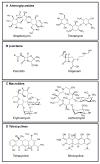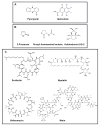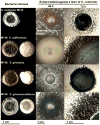Antibiotics as signal molecules
- PMID: 21786783
- PMCID: PMC3173521
- DOI: 10.1021/cr2000509
Antibiotics as signal molecules
Figures






References
Publication types
MeSH terms
Substances
Grants and funding
LinkOut - more resources
Full Text Sources
Other Literature Sources
Medical

